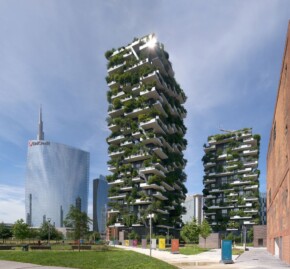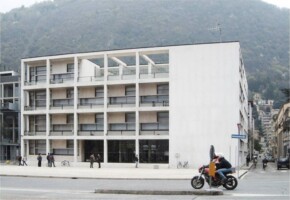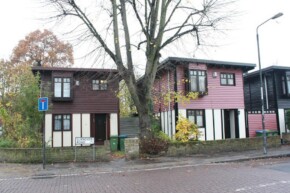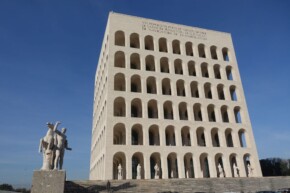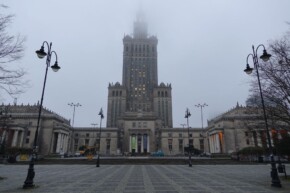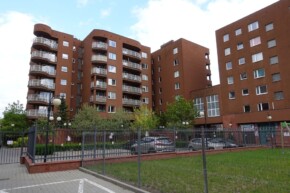An online lecture of the Bydgoszcz Academy of Art
Over the centuries, architects have tried, with varying degrees of success, to create architecture understood as a carrier of value. Since ancient times and Vitruvius, who in his treatise “On Architecture – Ten Books” drew attention to the 3 immanent properties of architecture: durability, usefulness, beauty. Through 19th century England and Augustus Welby Pugin, who recognised that “Gothic architecture was established divinely, it is not marked by human imperfection but is an unavoidable reality.” Through Le Corbusier, who spoke of the “honesty and integrity” of raw concrete. To the present day and Reinier de Graaf, who in his search for a solution to the problems of the modern world referred a rebours to Vitruvius. But instead of permanence, utility and beauty, he proposed a new triad: briefness, flexibility and humility.
Let us note that all the criteria cited refer to architecture understood as a building, as a matter.
But should we limit ourselves to the material when considering the question of morality in architecture? Can stone or steel be good or bad in themselves? Is the Corinthian column moral or immoral? Can we speak of ‘cynicism’ and ‘naivety’ in architecture? Finally, where is the architect-creator in this complex puzzle, in this complex process that is architecture?
In trying to find answers to these questions, let us first outline the area in which we will be moving. It is architecture understood as a process – as the ‘becoming’ of an object in time. “Becoming”, which is influenced by the creator and his collaborators, the ordering party – the investor, and the range of phenomena that form the background: from politics to economics, to religion and culture. […]
Has cynicism become so ingrained in architecture that we no longer notice it? When did the profession of idealists become the profession of cynics? Did this happen with the advent of post-modernism, when Charles Moore, asked by Jakub Wujek about the genesis of the new trend, replied that it was about differentiation from the competition and ‘business’? Or did it happen much earlier… At a time when modernists were creating pro-social concepts without paying attention to people’ real expectations? Or when architects closed their eyes to the crimes of totalitarian regimes, focusing their attention on ‘good architecture’? Or how about the time in the 2nd half of the 19th century when William Morris wanted to design “for everyone” but created products that few could afford?
Or perhaps… architects have always been cynical, with only a handful presenting a naive idealism? Towards the end of his long and fruitful life, Oscar Niemeyer said simply: “Architecture changes nothing. It always serves the rich.” We find plenty of evidence to support this assumption. Fortunately, there are many examples to the contrary.
Jakub Szczęsny, who is one of the engaged, actively searching creators, said that architects have a lot of possibilities. “Architects can do little if they want to present little of themselves (…) Sometimes small but suggestive gestures are enough.”
Walter Segal’s socialised design, temporary constructions of Shigeru Bana who helps disaster victims, the social housing of Alejandro Aravena… They are far from being classically understood beauties. Many times they put some of the power over the project in the hands of future users. The result is not, because it cannot be, monumental, classically beautiful architecture. Instead, the artists mentioned above sought to respond to the problems and challenges of the ‘present moment.’ They proved that architecture is about ‘something more.’ That architects can and should be treated as a profession of public trust. That “decency” is a more important criterion than abstract “beauty.” I naively believe that this is possible. (Błażej Ciarkowski)
Błażej Ciarkowski – PhD Architect Engineer. A graduate of architecture at the Technical University of Łódź and art history at the University of Łódź. In 2012, he defended his doctoral dissertation with honours and obtained the title of Doctor of Technical Sciences in the field of architecture and urban planning. Since 2017, he has been an assistant professor at the Institute of Architecture and Urban Planning of the University of Technology. Since 2012, assistant professor at the Art History Institute at the University of Łódź. Winner of the award of the Marshal of the Łódź Province for the best doctoral dissertation. Winner of the Minister of Culture and National Heritage scholarship. Author of and scientific and popular science books and articles. His research interests focus on post-war Polish and world architecture, the links between architecture and politics, as well as the conservation and protection of the heritage of the modernist movement. Member of Docomomo International, PKN ICOMOS, the Łódź Branch of the Association of Art Historians, and the Łódź Branch of the Association of Polish Architects.
Online lecture, broadcast: 10.03.2021–10.04.2021


